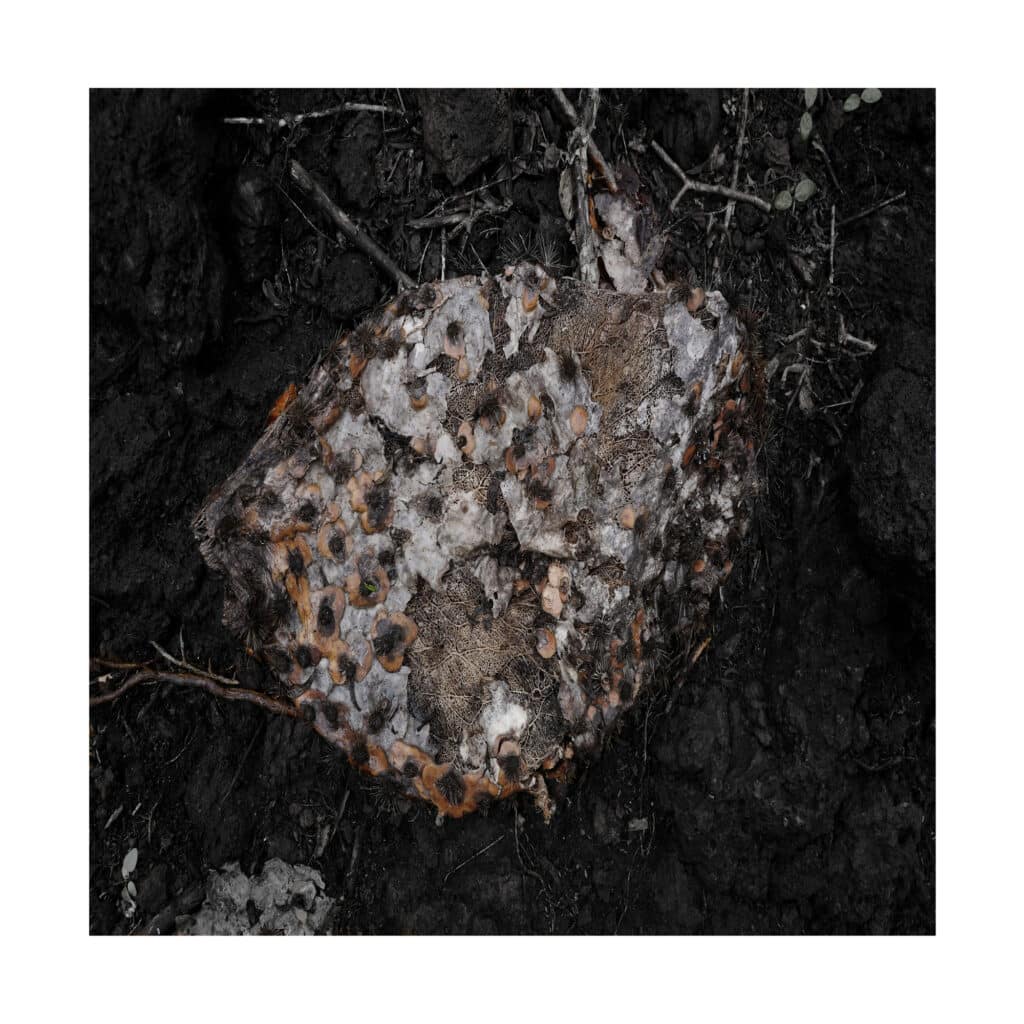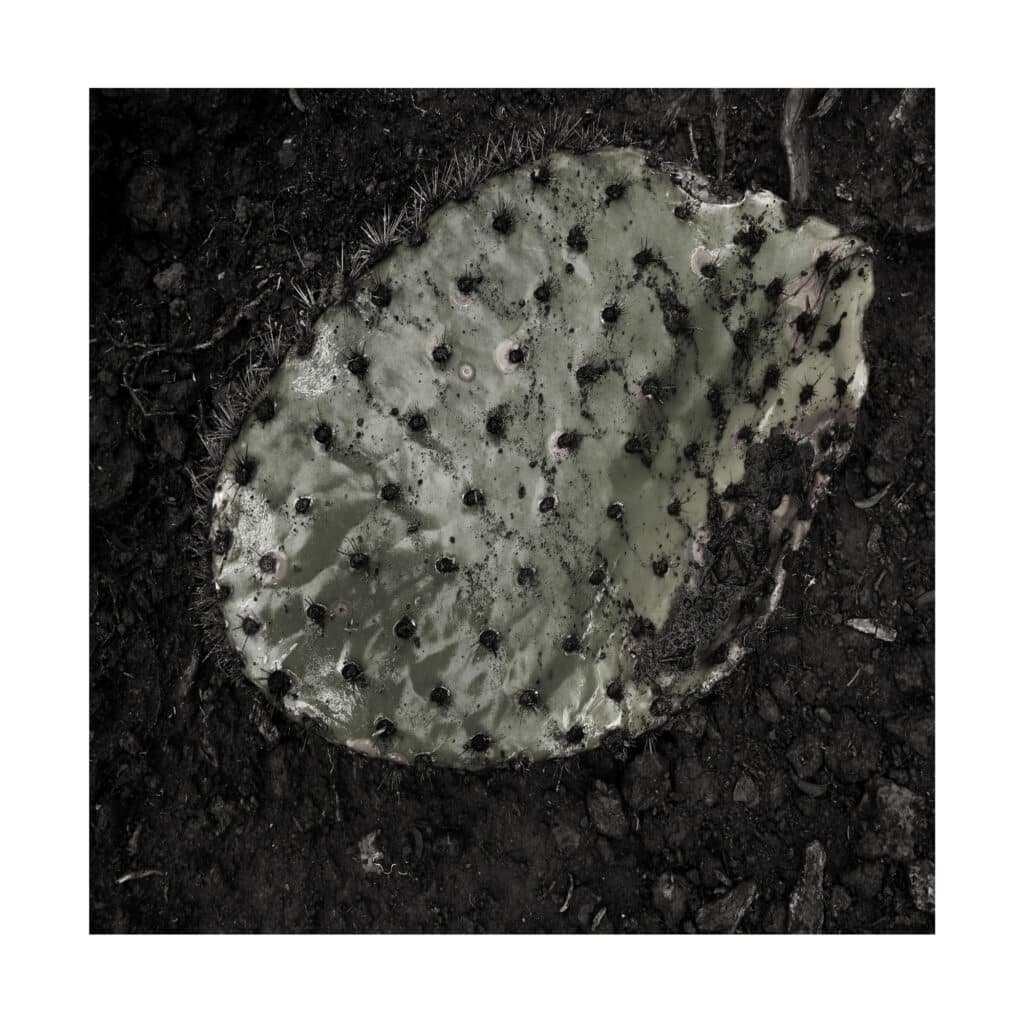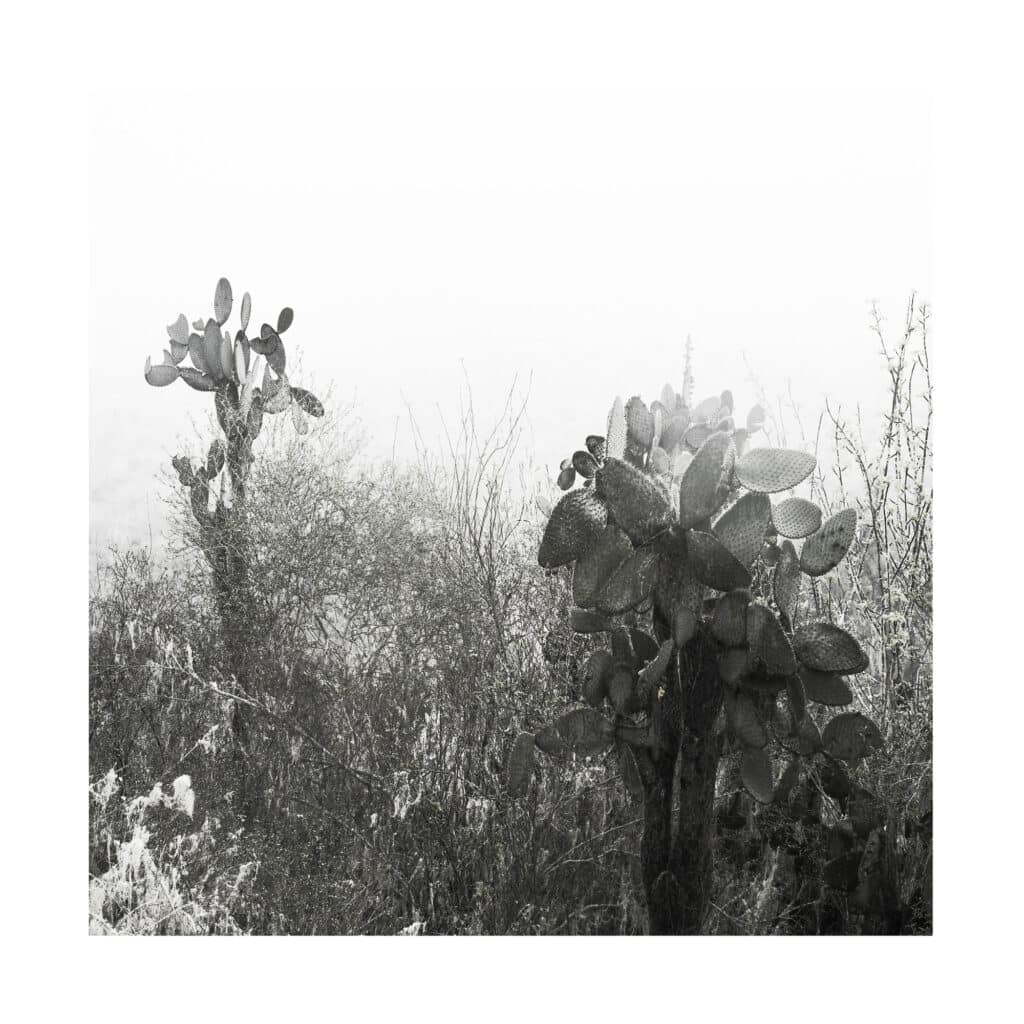White darkness: a cloud of vapor, a bank of fog, a curtain of rain. The subtle reticence of landscapes: a veil of droplets draped over the bare back of a mountain. Topography vanishes, allowing the steeple of a cloister to pierce through the mist. These whims of weather arise unpredictably, defying forecasts. Yet Jürgen Hill’s lens seems to draw them in as a rod might attract lightning.
Trekking with a digital camera through Cambodia, the Atacama Desert in Chile, Anatolia in Turkey, the Austrian Alps, or even overlooked corners of Paris, Hill captures atmospheric phenomena that, despite their immaterial nature, reshape seemingly solid landscapes.
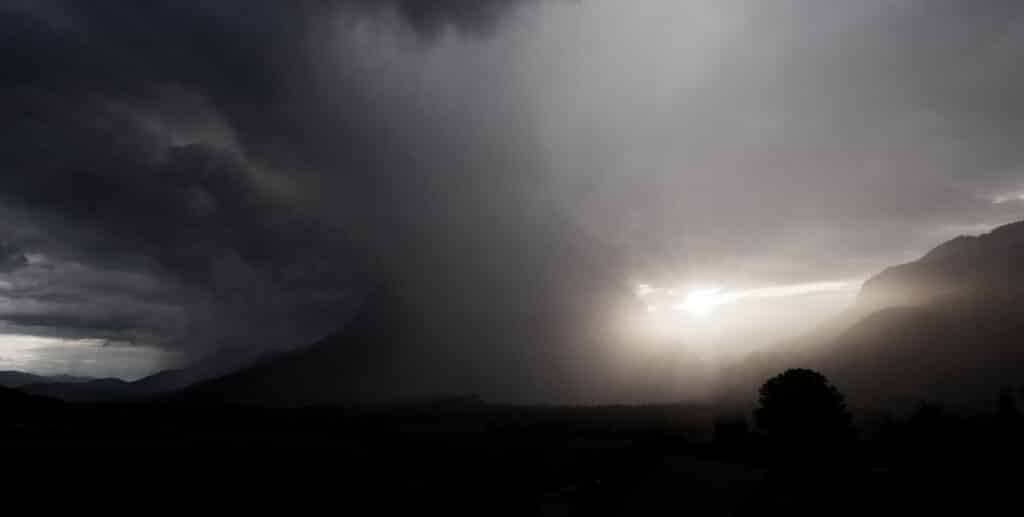
Regenfront is a sequence shot in Kleinarl, Austria. Hill recounts watching a storm front suddenly burst over a solitary mountain, cloaking it in curtains of rain before sweeping northeastward. Taken just minutes apart, the images comprising this series might as well span decades, so radically has the landscape transformed. Ephemeral moments intersect with the permanence of geology. A cold sun illuminates the scene only to deepen the shadows, accentuating the stark line of trees silhouetted in miniature in the foreground.
The images in the Atacama HQ series similarly blur temporal and spatial boundaries. Human silhouettes appear as though emerging from clouds of steam, evoking Plato’s primal humans, rising from undifferentiated darkness into vision and self-awareness. The ground beneath their feet, heated by volcanic activity, seems primordial and incomplete, as if not fully formed. Earth and sky mingle, undivided, while humans remain half vapor, half flesh. This is a world still discovering its contours. To contain it within the frame of a photograph feels almost miraculous.
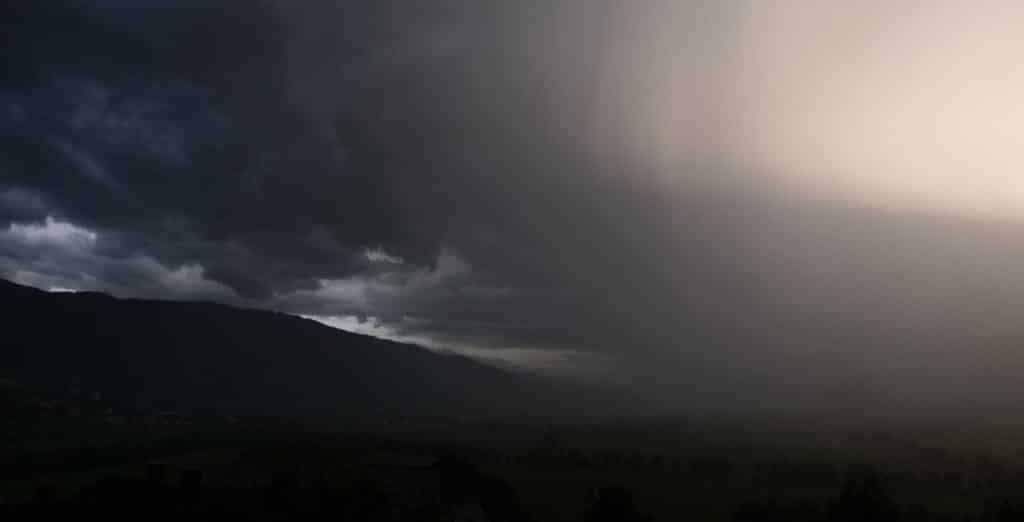
A postlapsarian world emerges in the Vale of Tears, Galapagos_Ecuador series. Hill recounts traversing a cactus forest, observing the cyclical rhythm of death and rebirth embodied in these extraordinary plants. The square, 40x40cm prints offer close-up portraits of individual specimens, while a few shots capture the broader landscape, showcasing arborescent growths towering above prickly thickets. As they desiccate and decay, the cacti undergo strange transformations: their flesh folding, turning inward, discoloring—like amorphous forms studded with thorns.
Human activity becomes palpable in Azúcar, a series shot in San Agustín, in the department of Huila, Colombia. Here, Hill captures the steam-filled factory where sugarcane is transformed into caramel-colored blocks, resembling hefty bricks of unrefined sugar, called panela. These blocks can be shaved into a coarse powder redolent of molasses. The rising steam makes the tropical air seem almost tactile, thick with humidity.
One series in this small exhibition breaks away from fog-altered landscapes: taken in places as disparate as Ureki on the Black Sea in Georgia and Tierra del Fuego in Chile, these images depict what might appear to be remnants of a lost civilization. Skeletal metal structures resemble roofless shelters or strange lookout points perched at the sea’s edge. Their dark or white silhouettes slice across the horizon and shoreline, trisecting each image. Their scale is often ambiguous, as low camera angles distort perspective and scale. These images bear titles such as Sonnenschutz (sunshade), Anglerschutz (angler’s shelter), Strandaufsicht (lifeguard station), simply Ausblick (view), or more enigmatically, Die Angst des Torwarts (the goalkeeper’s fear).
Whether rendered in black and white or color, all of Hill’s images invite contemplation, drawing the viewer into worlds that balance between reality and myth.
“Jürgen Hill, Mondes de Brumes”, is on view until November 3, 2024 at Espace Despalles, in Paris.

